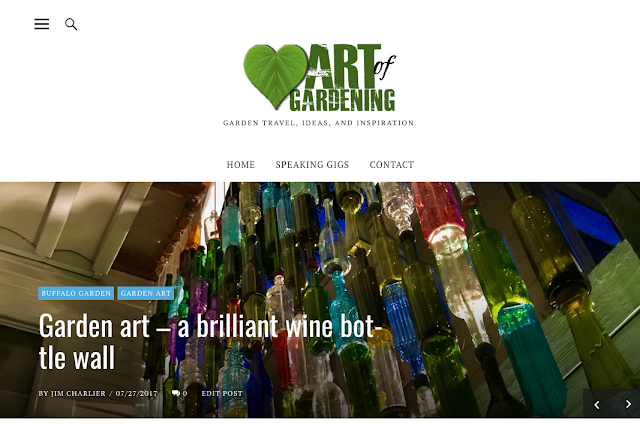
Spanish architect Antoni Gaudi had a great patron and advocate in Eusebi Güell (pronounced guay). The two of them hatched a plan to build an upscale English-style housing development in the Gracia District, just outside of Barcelona (radical in 1900) that included a park and 60 plots intended for building homes. Only two were ever built – but so was the park. And it is the park that has endured and enveloped by the city of Barcelona. It was taken over by the city of Barcelona in 1922. It is now one of the top five tourist attractions in Barcelona. It is now also a UNESCO World Heritage Site.
The property is on the side of a hill and Gaudi laid it out with curving paths that followed the land. The park has viaducts, colonnades, fountains, a winding staircase, a large open pubic area, garden areas, picnic areas, performance areas and much more.
Tradesmen working on Gaudi projects throughout the city were encouraged to collect bottles, plates, glass, porcelain, and anything ceramic, in order to create the winding benches that surround a wide, level performance area. The bench is said to be the longest bench in the world.
Two fantastic tile-roofed, gingerbread-looking gatehouses open to an immense tiled stairwell complete with built-in planters, fountains lead to a roofed area with 100 columns supporting the large performance area above it.
The tile work throughout, with broken plate and tile fragments is called
trencadis and is considered a Catalan Modernism style of working with tile. It's also called
pique assiette. Parc Güell is the first extensive use of this style of tile work.
I will definitely be looking to add a broken tile project to my garden
this summer. I need some Spanish influence on my garden, and who better
than Gaudi to provide it?
 |
| One of the two gatehouses. This one you can tour as part of the park admission (7 Euro) |
 |
| I loved the windows. The tilework looked like gumdrops, adding to the gingerbread effect. |
 |
| And the roofs! No one does a roof like Gaudi. |
 |
| Leaning columns of stone supporting the hillside. |
 |
| The winding tile bench. |
 |
| Even nicer close up. |
 |
| It also incorporated planters at each end. |
 |
| The park's plants were mostly native Mediterranean plants that were low on color but high on texture. |

 |
| A Gaudi-designed fence brought here from another property. The iron work is based on palm fronds. |
 |
| A moss-covered rock that is part of one of three fountains on the stairwell |
 |
| Gaudi's mosaic lizard which is now an icon of Barcelona. It's also a fountain, he's not just drooling.. |
 |
| A beautiful tile wall leading up the stairwell. |
 |
| The third fountain on the stairwell - stone and plants. |






























What an amazing place, and an excellent job of capturing it all. The gingerbread gate houses were fantastic.
ReplyDeleteThese photos don't even come close to capturing the park - but thank you!
ReplyDelete